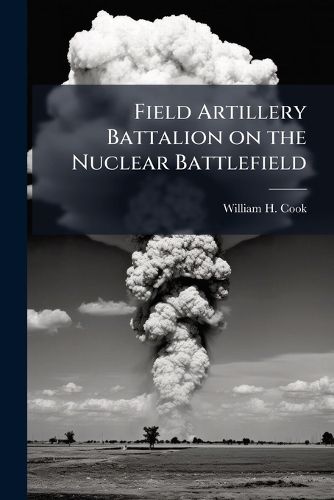Readings Newsletter
Become a Readings Member to make your shopping experience even easier.
Sign in or sign up for free!
You’re not far away from qualifying for FREE standard shipping within Australia
You’ve qualified for FREE standard shipping within Australia
The cart is loading…






This title is printed to order. This book may have been self-published. If so, we cannot guarantee the quality of the content. In the main most books will have gone through the editing process however some may not. We therefore suggest that you be aware of this before ordering this book. If in doubt check either the author or publisher’s details as we are unable to accept any returns unless they are faulty. Please contact us if you have any questions.
This research examines the organization of the field artillery battalion, 8", self-propelled, and its effectiveness in a tactical nuclear environment--European theater. The field artillery's requirements for accuracy, command and control, service support and target acquisition are discussed in detail. To determine the battalion's operational parameters particular emphasis is given to the enemy threat, divisional defensive operations and the field artillery techniques to support those operations. Further, it is ascertained that dispersion, responsiveness and austerity of units are of paramount importance on the nuclear battlefield and do impact upon the battalion's organizational effectiveness. Three possible battalion configurations are examined, weighing the advantages and disadvantages of each. These configurations are, in turn, compared to the current battalion organization. The comparison reveals that the current organization is capable, but inefficient. Additionally, it is found that many personnel and equipment assets are misutilized. Finally, an optimal battalion organization is proposed that eliminates the current inefficiencies without exceeding current manpower and material authorizations.
This work has been selected by scholars as being culturally important, and is part of the knowledge base of civilization as we know it. This work was reproduced from the original artifact, and remains as true to the original work as possible. Therefore, you will see the original copyright references, library stamps (as most of these works have been housed in our most important libraries around the world), and other notations in the work.
This work is in the public domain in the United States of America, and possibly other nations. Within the United States, you may freely copy and distribute this work, as no entity (individual or corporate) has a copyright on the body of the work.
As a reproduction of a historical artifact, this work may contain missing or blurred pages, poor pictures, errant marks, etc. Scholars believe, and we concur, that this work is important enough to be preserved, reproduced, and made generally available to the public. We appreciate your support of the preservation process, and thank you for being an important part of keeping this knowledge alive and relevant.
$9.00 standard shipping within Australia
FREE standard shipping within Australia for orders over $100.00
Express & International shipping calculated at checkout
This title is printed to order. This book may have been self-published. If so, we cannot guarantee the quality of the content. In the main most books will have gone through the editing process however some may not. We therefore suggest that you be aware of this before ordering this book. If in doubt check either the author or publisher’s details as we are unable to accept any returns unless they are faulty. Please contact us if you have any questions.
This research examines the organization of the field artillery battalion, 8", self-propelled, and its effectiveness in a tactical nuclear environment--European theater. The field artillery's requirements for accuracy, command and control, service support and target acquisition are discussed in detail. To determine the battalion's operational parameters particular emphasis is given to the enemy threat, divisional defensive operations and the field artillery techniques to support those operations. Further, it is ascertained that dispersion, responsiveness and austerity of units are of paramount importance on the nuclear battlefield and do impact upon the battalion's organizational effectiveness. Three possible battalion configurations are examined, weighing the advantages and disadvantages of each. These configurations are, in turn, compared to the current battalion organization. The comparison reveals that the current organization is capable, but inefficient. Additionally, it is found that many personnel and equipment assets are misutilized. Finally, an optimal battalion organization is proposed that eliminates the current inefficiencies without exceeding current manpower and material authorizations.
This work has been selected by scholars as being culturally important, and is part of the knowledge base of civilization as we know it. This work was reproduced from the original artifact, and remains as true to the original work as possible. Therefore, you will see the original copyright references, library stamps (as most of these works have been housed in our most important libraries around the world), and other notations in the work.
This work is in the public domain in the United States of America, and possibly other nations. Within the United States, you may freely copy and distribute this work, as no entity (individual or corporate) has a copyright on the body of the work.
As a reproduction of a historical artifact, this work may contain missing or blurred pages, poor pictures, errant marks, etc. Scholars believe, and we concur, that this work is important enough to be preserved, reproduced, and made generally available to the public. We appreciate your support of the preservation process, and thank you for being an important part of keeping this knowledge alive and relevant.